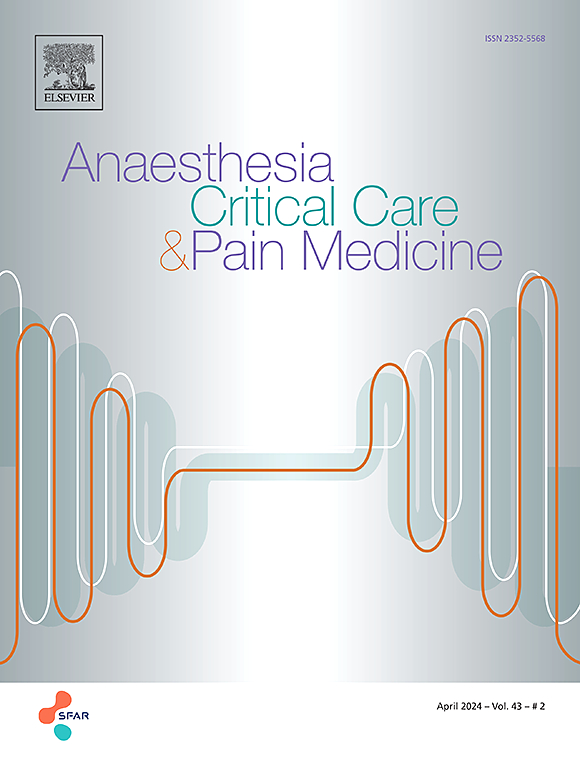气管切开术患儿自主呼吸妥布霉素气雾剂喷射与振动网状喷雾器的模拟研究。
IF 3.7
3区 医学
Q1 ANESTHESIOLOGY
引用次数: 0
摘要
气管造口管就像异物一样,使周围气道容易受到呼吸道感染。感染的初始治疗是局部雾化妥布霉素,尽管缺乏标准化治疗的指南。量化妥布霉素给模拟气管造口儿童的剂量,为未来的给药指南提供信息。一个呼吸模拟器被编程为容量控制通气在6毫升。kg-1,分别适用于3公斤和16公斤的儿童,分别代表6岁以下或6岁以上。根据目前未气管造口术儿童的指南(分别为6岁以下和6岁以上的80毫克或300毫克),使用标准医院方案给予雾化妥布霉素剂量,在过滤器上收集,并用色谱法测定6次重复测量的平均妥布霉素剂量。喷射喷雾器比振动网喷雾器从80毫克(年龄)输送更多的妥布霉素本文章由计算机程序翻译,如有差异,请以英文原文为准。
Jet versus vibrating mesh nebulizer for tobramycin aerosol in spontaneously breathing children with tracheostomies: A simulation study
Tracheostomy tubes act as foreign bodies, predisposing the surrounding airway to respiratory infections. Initial treatment for infections is topical – nebulized tobramycin – although guidelines for standardized treatment are lacking. To quantify tobramycin delivery to simulated, tracheostomized children to inform future administration guidelines. A breathing simulator was programmed for volume-controlled ventilation at 6 mL.kg−1, for a 3 kg and a 16 kg child representing under or over 6-yrs, respectively. Nebulized tobramycin doses based on current guidelines for non-tracheostomized children (80 mg, or 300 mg, under and over 6-yrs, respectively) were delivered using standard hospital protocol, collected on filters, and assayed with chromatography to quantify average tobramycin delivered dose from six replicate measurements. The jet nebulizer delivered more tobramycin than the vibrating mesh nebulizer from an 80 mg (ages <6-yrs) dose for both a 3 kg child: 2.1 vs. 0.7 mg (3 mm, p = 0.047) and a 16 kg child: 8.7 vs. 3.5 mg (5 mm size, p = 0.022), 11.4 vs. 8.3 mg (4 mm size, p = 0.2). The jet nebulizer delivered more tobramycin than the vibrating mesh nebulizer from a 300 mg dose for both a 3 kg child: 8.4 vs. 3.7 mg (3 mm, p = 0.00076) and a 16 kg child: 33.2 vs. 25 mg (5 mm, p = 0.2) but not for a 16 kg child: 39.4 vs. 46.5 mg (4 mm, p = 0.18) The low amount and poor distribution of drug delivered warrants consideration and review of dosing regimens for treatment. Future research should investigate improving the efficiency of drug delivery to tracheostomized children and the safety and efficacy of higher-dosage regimens.
求助全文
通过发布文献求助,成功后即可免费获取论文全文。
去求助
来源期刊

Anaesthesia Critical Care & Pain Medicine
ANESTHESIOLOGY-
CiteScore
6.70
自引率
5.50%
发文量
150
审稿时长
18 days
期刊介绍:
Anaesthesia, Critical Care & Pain Medicine (formerly Annales Françaises d''Anesthésie et de Réanimation) publishes in English the highest quality original material, both scientific and clinical, on all aspects of anaesthesia, critical care & pain medicine.
 求助内容:
求助内容: 应助结果提醒方式:
应助结果提醒方式:


